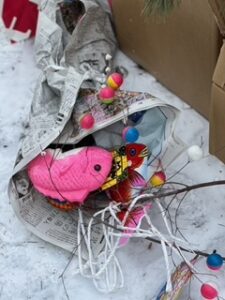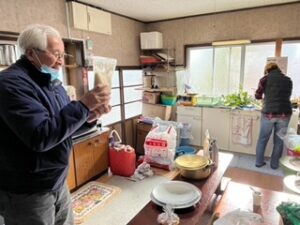The Japanese Mind
- At December 04, 2022
- By anneblog
- In Uncategorized
 0
0
Dear Family and Friends,
Today in my advanced English class we talked about “the Japanese Mind” and how it differed from Western ways of thinking. Of course, we touched up “collective and individualistic cultures” and their differing mindsets. That led to natural disasters and their influence on the Japanese psyche. In times of emergency, the Japanese know they have to act collectively, literally to survive. And of course, being an island nation with a history of years of enforced isolation has also contributed to what could be considered a very unique mindset.
I have lived many years in Japan and have made great efforts to understand the Japanese way of thinking. Even now, I continually try and fit in to this society. However, I realize over and over again that the structure of my psyche will always be American. Let me give you a few examples.
I take T’ai Chi lessons in a program with about seven teachers. Each teacher specializes in one form and we students choose which group we would like join. I did one form for a year. But the teacher and I thought so differently that it was better for me to go elsewhere when the year was up.
Our differences came mostly because I raised my hand and boldly asked questions. The teacher was not used to that. She felt I was confronting her. I was not. I respected her knowledge, and therefore, asked her advice. The other students, without the teacher knowing, told me they appreciated my questions because they dared not ask themselves. For them, if they asked questions, they felt they would have stood out too much. That would have embarrassed them. It may have also brought shame to the teacher for not instructing in a way that made questions unnecessary. The teacher could never come to see the situation from my perspective. So, I felt it was better to change groups.
My next teacher was a university professor, so he was fine with my questions. But in this group, too, I stood out as very non-Japanese, but in another way. I had joined after the other members had worked on a particular form for a year. I came in a complete beginner. There were all levels of proficiency. So, the good students were in the front and the struggling ones in the back. I, of course, was in the very back row.
However, in that humble position I could not see the proper way to do a form. I really wanted to learn. So, I simply moved forward to be next to one of the advanced students. At first, the teacher looked rather startled. But he quickly figured out what I was doing. So, after that, every week he assigned me to the front. I appreciated his understanding and flexibility very much.
There is one thing that amazes me, though. And it might be considered another example of “the Japanese Mind”. The stumbling students in the back, despite being surrounded by only ill-performers, eventually learned how to do the form properly. They seemed to intuit the right way. I, on the other hand, despite the special treatment I am getting, am still struggling with basics.
Later this same teacher could not come to class. He left instructions what we were to do. We realized what he assigned would never fill the two-hour lesson. So, everyone seemed to panic. As they buzzed and fretted, I simply said, “We are adults. We can choose for ourselves. And Wako San is the best in our group, so maybe she can lead us today.”
As soon as I said that, everyone stopped talking and jumped back, staring at me as if I were some sort of monster. Some even had their mouths open in utter surprise. I just shrugged, backed off , and let them continue deliberating.
The following week, the teacher was again absent. Everyone turned to me and said, “What are we going to do today, Anne.” I was startled and said it depended on what everyone wanted. Again, they were surprised by my response. But eventually one man took over and since then he has been our leader. Everyone seems relieved that way.
But one unexpected addition to this arrangement is that now the more advanced students deliberately help those of us who are struggling. Instead of lining up by ability, we are mixed together. People ask questions and whoever can is delighted to assist. So, it really is a team effort. And that makes me feel happiest of all.
Love,
Anne
Lunch & a Bath
- At April 26, 2022
- By admin
- In Annes Letters
 0
0
Sendai has changed a lot over the years. When I first came, it had a small town feel to it. There were Mom and Pop shops in every neighborhood, lovely traditional homes with large windows and verandas. Grandmothers would sit there and greet the children as they headed to and from school. Even many apartments were relatively small with lovely gardens in the entrance, or with flowers bursting from their balconies.
,
The changes happened gradually. That is until the 2011 earthquake. Of course, much of the city had to be rebuilt. But in the past few years, transformation has been astonishingly rapid.
Now the main train station is filled with trendy shops. Many streets seem wider and busier. Lots that used to have a house and a garden have somehow managed to squeeze three houses in together.
Instead of parks, there are parking lots. Instead of trees, there is more blacktop. Houses that were open to the community now look like fortresses. They are safer when earthquakes strike. But they feel very unwelcoming.

Despite this trend to modernize, there are a few places that are still holding out. That is amazing, especially considering the number of businesses that have closed due to the Corona upheaval or simply aging owners. One of my favorite of such places is a soba noodle shop called Imo Sen.
The owner is the son of one of my former adult students. When the father was in charge, it was kept exactly as his mother and grandmother had it. Tatami floors, low tables, advertising only by word of mouth, only the sound of slurping noodles or frying tempura.
When I returned after a long hiatus, I was happy to see the same four low tables, the tatami floor, the sound of cooking and slurping. But there was also a radio playing softly and a few items, like spices, for sale. And outside there was quiet advertising.
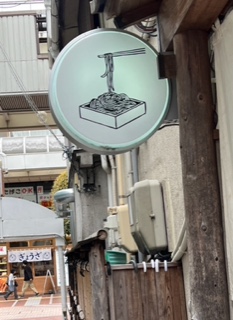

Unfortunately, the current owner has no children and his brother is allergic to buckwheat. So, maybe this will be the final generation of this wonderful place.
Another delightful, very traditional establishment is a public bath. I learned about it recently from a friend. Since my apartment has only a shower and I suffer terribly from cold, I was thrilled to learn about it. It is right downtown. It is tucked back on a side street. So, if you don’t know it, you would never even realize it existed. Yet, it also has stood in the same spot for a very long time.
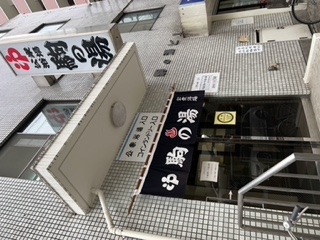
The place is called “Koma no Yu”. The people who frequent it are the salt of the earth. Just from appearance, it was easy to imagine those women had worked hard all their lives. They probably had great responsibilities in their husband’s family business. And being proud Japanese women, they carried their weight and then some.
As soon as I walked in, one of these gems came up to me. She was concerned that I did not know how to take a Japanese bath. Of course, I knew, but was appreciative of her care. So, I paid full attention and thanked her profusely. Later we both soaked together neck deep in a bath, along with about five other women. It was the sort of companionship I cherish and have missed during these months of Corona.
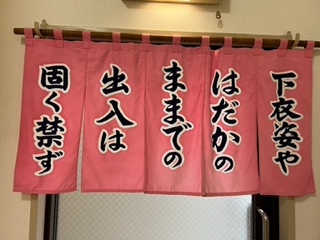
I am happy that on side streets in the center of Sendai there are traditional places still going strong. In the future, either by word of mouth, or simply exploring, I hope to find more. And quickly, before they disappear.
Love,
Anne
Being Part of a Community
- At April 13, 2022
- By admin
- In Annes Letters
 0
0
When I was in the fourth grade, my teacher gave us an assignment to decide what job we wanted when we grew up. We were meant to do a bit of research and write a report about it.
My mother was particularly upset by that homework. “How can kids possibly know what they will do in the future? When you are young, you are meant to be exploring the world. You are meant to expand what you know in all directions. Later, when you are a lot older, you can consider how you want to direct your life more specifically.”
Then she added, “Don’t choose something ordinary for this silly assignment. Choose something that will broaden your thinking. Like a spy. Tell your teacher you want to join the CIA!”
Being the dutiful daughter that I was, I did as I was told. My teacher was horrified. She was a simple local gal, so could only respond according to her own educational training. “Is this a joke? Choose something more appropriate!” I knew I had to stay in that class, so to avoid conflict, I sheepishly chose nurse.
One of the many things that impresses me about the Japanese culture is how it encourages kids to learn about their community and to be part of society. One way they do this is to take them on fieldtrips to learn about jobs.
The other day in the small post office near my home, I noticed an interesting display. They were thank you letters written by a second grade class. The students had recently held an interview with the postmaster and clerks. The messages thanked the adults for their time and for what they had learned. Of course, those gems were proudly displayed for the whole community to enjoy.


This sort of thing is not unusual here. It is possible to see such delights in hospitals, train stations, police stations, and fire halls. The purpose, or course, is to introduce the children to many jobs that make up a community. And it also teaches them the fine art of gratitude.
Kids are always trained to think of others. I have several friends with young children. The kids love drawing, so are usually busy at work when I am there. As I am leaving, either spontaneously or with a bit of prompting, the child will give me a drawing.
“Remember, we want to make other people happy. So, don’t keep your drawing for yourself or for mommy. Think how happy Anne will be with your artwork.”
And of course, I am. I have several of these masterpieces displayed in the entranceway of my home.
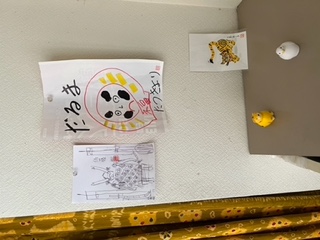
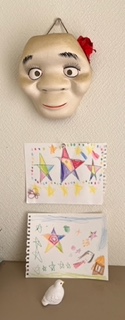
And now because it is cherry blossom season, almost everyone takes time to enjoy the ethereal beauty of Sakura. People go to parks in groups, with friends, as families, on their own. All ages are together. Everyone appreciates this permission to be free and open. From infants to ancients, people are united by beauty. What could be a better way to hold a society together?

Love,
Anne
A Day of Japanese Tidbits
- At April 03, 2022
- By admin
- In Annes Letters
 0
0
Every long break from work I try to sort through the mess in my home. That gives me a chance to discard mountains of unrealized accumulations. That is, if I have the heart to do it. I have a collector’s gene, which comes directly my mother’s side of the family. So, it almost goes against my DNA to throw anything away. But living in small, tidy Japan has given me another perspective on having things. “Less is more,” as they say.
This year, I finally surrendered to an incessant internal nagging. That is, I decided to have a discerning look at everything on my computer. From the start, I was in shock. Things as far back as 2008 were still hanging around, as were many sites that no longer even existed.
For the past few weeks I have diligently sorted through one e-mail, one document, and one photo after another. The work is time-consuming and tedious. But I press on, despite the havoc it wrecks on my body. Unfortunately, I still have far to go.
Of course, it also takes me all over the world, so I often barely realize I am in Japan.
Today, though, I decided to take a break. I wanted to be right here. I wanted to appreciate being in Sendai. How? A friend has a Sunday restaurant in a temple. Since it was a lovely day, I decided to take the subway there and then walk the two hours home.
Despite the bright red carpet, the atmosphere in the restaurant was delicately Japanese. There was a simple floral arrangement on each table and live koto music for us to enjoy. I savored each moment and every bite.

Next to the Buddhist temple was a Shinto shrine. There were several small shrines besides the main one. I was amused to see a banner of Sendai’s baseball team hanging in one of them. Later a friend told me the horoscope animals of the shrine and of that team were the same. So, for her having them together was not only perfectly natural, but a great idea.
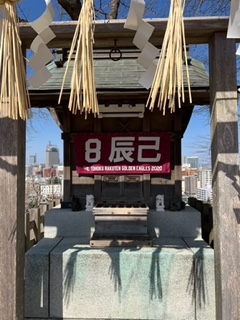
Later I came across a very small, but vocal anti-vaccine demonstration. Whether I agreed with them or not, I admired their willingness to stand out and their courage to disagree with government policy. I found that reassuring after so much in the news recently about authoritarian countries blocking such freedoms.
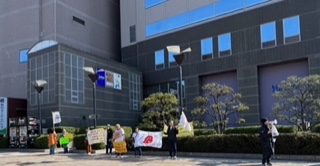
My walk continued into smaller neighborhoods. I was impressed to find a flower shop that was closed, but trusting enough to leave plants for sale outside unattended.

There is always an abandoned home.

Contrasted with plum blossoms gloriously enhancing parks, rivers, gardens, and temple grounds.
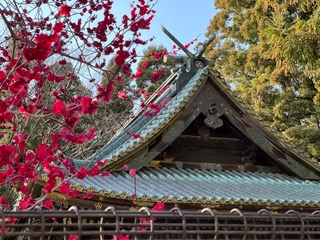
Another delight of this “Be in Japan Day” was hearing the clop-clop-clop of wooden geta sandals. They are rare except at festivals. But a neighbor decided to wear his as he accompanied his wife to the supermarket.

Later I brought in my futons and prepared for bed.
It has been wonderful day of appreciating being fully where I am, right here in beautiful Japan.
Love,
Anne
Town Hall Meeting
- At March 12, 2022
- By admin
- In Annes Letters
 0
0
Please forgive a letter following so quickly after my recent one. That message was about the past and the horrific present we are facing. However, this one is about the future, a local one, that is.
It seems the Miyagi Prefectural government is planning to relocate four medical institutions out of Sendai. Those include two regular hospitals, a cancer center, and a mental health facility.


One of the hospitals is down the street from me. I go there for my broken arm. After the initial three-week stay, I returned for rehab four times a week, then three , then twice, finally once a week. I am to see the doctor again next Wednesday, hopefully for the last time. This process has taken over a year.
Of course, I am not too keen on the relocation proposal. Neither is my friend Izumi. She has taken her husband to its emergency room four times in the middle of the night. “It was bad enough as it was. What would I have done if a hospital had not been there?” she wailed.
Today’s lecture-discussion began with a government official lecturing on why the move was crucial. His reasons were financial and the need for better medical institutions in rural areas. After an hour, he yielded the floor to anyone who wished to speak. I was surprised that everyone there, from both Sendai and the countryside, was opposed to the idea.
Many of the people who spoke lived nearby and had personal medical reasons, just as I have. But there was also a physical therapist who pointed out how inconvenient it would be for people like him. His salary would probably not increase, but his transport time and fees would. And what about his family? They would see him a lot less. Or was the government expecting them to move? Would his kids have to change schools? Could his wife keep up her current job? Or is the government planning to dismiss current employees and replace them with local ones? Needless to say, he was on edge by this entire idea.

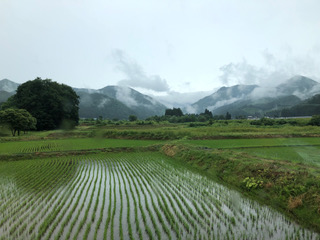
My favorite, though, was a delightful old farmer. His recent hobby was photography. He loved the world around him and would get up early to snap shots of sunrises or the swans and cranes who visit here from Siberia in winter. He proudly held up a few of his masterpieces for us all to admire. Then he said, “Every year the Red Cross Hospital allows us to have a photo show in their lobby. How can we agree to give up that nice community space just to please you!” With that, everybody clapped.

There will be other discussions later in the month.

My idealism nudges me to hope that in this major decision all three aspects can blend harmoniously. That is, economic concerns respectful of both the science and the art of medicine. And it is crucial to remember that medical care is first and foremost attending to vulnerable human beings with attention, skill, time, and genuine concern.
Love,
Anne
March 11 Memories
- At March 11, 2022
- By admin
- In Annes Letters
 0
0
March 11, 2022 marked the eleventh anniversary of the Great East Japan Earthquake and Tsunami. For the most part, it was a regular day here, with people going to work and kids rushing to school. But the front pages of newspapers showed another story: the tsunami rolling in, devouring everything in its path, destroyed buildings, and shocked, tear-filled faces.
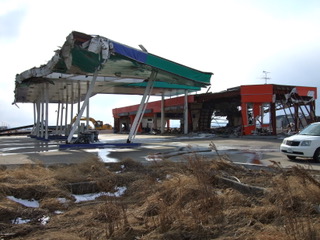
In the evening, a friend sent me an e-mail, remembering so many events of that time. It was not only about destruction, but also the incredible bravery and resolve of the people, how they banded together, helping friend and stranger alike. It is that unified, caring focus I remember the most and hold in my heart the most dear.

Of course, we all talked about that day, that time. It was a challenging, memorable period in our lives. But everyone stood humbled before their personal experiences and what people in Ukraine and Russia are going through now. In Japan we worry about Russia to the north, China to the south, North Korea to the west. A natural disaster is nothing like a war. There is no hate; there is no hunger for power; there is a beginning and end; people can look for food and water without the fear of being bombed.
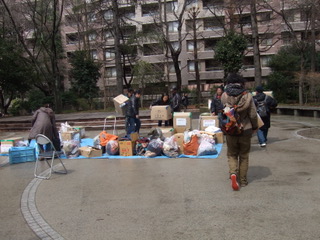
Our hearts and minds are in such a different place now, not only here in Japan, but worldwide. If a tsunami of that level occurred today, international news would probably give it only a passing glance. What we will become from today’s tragedies is anyone’s guess. There will be much more suffering. But maybe that is the reality of being human and consciously striving to evolve ourselves and our societies beyond the limits we know today.

Gambarimashou, Courage, as my mother used to say.
Love,
Anne
Sanpia and Inner Serenity
- At February 20, 2022
- By admin
- In Annes Letters
 0
0
Last week my friend Noriko called and asked if I wanted to go to a spa. She had not been feeling well since her Corona booster and felt a good long soak would do her good. I love doing things with Noriko and Japanese spas are beyond words wonderful, so I gladly agreed to go.
I was astonished when we drove to a part of the city that was once vast paddies, but now is basically highways, big chain stories one after another, factories, and parking lots for trucks. It is the sort of place I avoid at all costs. But there we were.
Seeing my expression, Noriko reassured me by saying, “Sanpia (Sun Pier?) is a nice place. You will like it.” I smiled and we headed to the entrance.
To my relief, the first impression was indeed welcoming. There were tiny raked-sand gardens and large trees in the lobby. And the floors and walls were made of inlayed marble.

It seems half of this oasis is a sports center, the other a spa. We, of course, headed right to the baths. Again, I was both surprised and delighted to see many pools, some inside, some out. There were large ones with still water for relaxing. And small, more specifically therapeutic ones with water forcefully shooting in bubbles, wonderful for massaging stiff shoulders and aching backs.
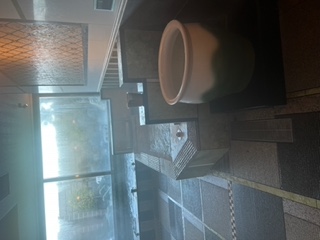
There were two saunas with large containers of salt for scrubbing your body.
And outdoors there were a multitude of more baths.

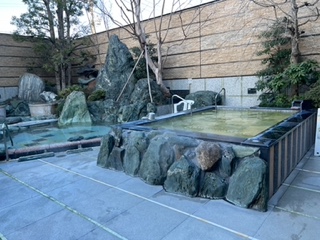
My apartment has only a shower, which can be tough in winter. So, a few days later I took a subway and braved the horrendous, but thankfully not long, walk to Sanpia. As I sat outside happily soaking, I thought of this spa compared to regular ones. All are heated with natural thermal waters, but this one is unique. Instead of trees and rivers surrounding the baths, I could vaguely sense the blacktop, concrete, factories, and trucks. I realized this was how most of us have been surviving the chaotic past few years. We turn inward to find a beautiful place of serenity that balances out the shocks and horrors that bombard us day in and day out. Our minds and hearts are indeed the Sanpia we can create wherever we happen to be.

Love,
Anne
Setsubun, “Seasons’s Divide”
- At February 03, 2022
- By admin
- In Annes Letters
 0
0
Japanese love festivals. They have at least one for every month of the year. If there is no big and famous reason to celebrate, there surely are small, local, even private ones. Any excuse to celebrate. In fact, Japanese festivals are the happy glue that holds this traditional culture intact and many communities together.
Setsubun, “Seasons’ Divide”, is the thin, but dangerous crevice that occurs between winter’s dark mysteries and spring’s lightness and hope. It occurs one day before the start of the lunar spring. At that time, Oni demons rise up ferociously and must be chased out of homes and neighborhoods, dispersing all evil as they go.

It is the tradition to throw roasted soybeans at the Oni while shouting, “Oni wa soto! Fuku wa uchi!” (“Out with devils! In with good luck!”) From long ago to now, people believe the world will be purified with this ritual. And then, once again, new life will be given a fair chance to offer its abundance to the earth.
Setsubun is not a national holiday, even though it is widely celebrated, both privately and publicly. Until this year, I had always been working, so was never able to attend. But I was curious. So, despite Oni Omicron knocking on many doors at this time, I decided to see what the ceremony was like. I headed to Toshogu Shinto Shrine near my home to find out.
When I arrived, I was met by the droning sound of a priest chanting people’s names. Were they individuals who were ill or having trouble? Probably. After a while, three priests came out and tossed a few beans at folks gathered nearby.

The crowd was small this year. So, folks could easily hold open bags or boxes on their heads and catch plenty of beans.
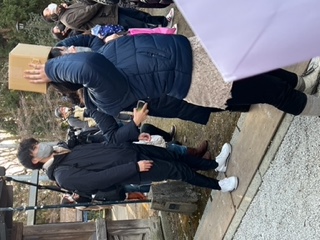

In the end, people lined up politely to get a ”Lucky Bag” to take home.

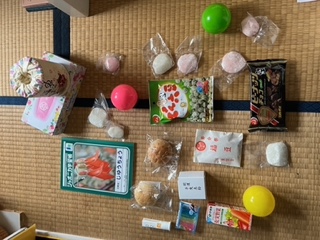
Today was a lot of fun. But I seriously hope this traditional festival has hit Oni Omicron hard. We have to hope Oni Omi and her descendants will get the message and allow us a healthy, happy spring. We need Setsubun. We need a purified world!
Love,
Anne
Dontosai 2022
- At January 15, 2022
- By admin
- In Annes Letters
 0
0
January 14 is Dontosai in Japan. That marks the final day of the New Year period. That means a day of special and significant events. Usually I head to the most boisterous Shinto Shrine’s Naked Festival. For that participants, clad in loin cloths, ring bells as they march through the city, heading to Osaki Hachiman Shrine. There they circle a raging bonfire, drink warming sake, and pray with hundreds of others at the huge, welcoming, and noisy altar.
But this year was different. First, because of Oni[1] Omicron sweeping through the country. Also, I felt unsure of the roads leading there. I have become very cautious since breaking my arm just over a year ago. As I learned firsthand, ice can hide in silent patches, causing long term disastrous consequences. But lucky for me, a friend invited me to her sister’s one day restaurant opening (usually closed in winter) near a well-known Shinto Shrine and Buddhist Temple.
I was thrilled by the chance. So, after my art lesson nearby, I head for a nourishing warm lunch. However, to my surprise, Kazue greeted me with open arms saying, “Hello Anne. How nice to see you! But why are you here now?” It turned out the restaurant would open at 4 pm, when many people would be heading to the Shrine to toss their New Year decorations into the sacred, cleansing bonfire. (People had been coming all day, but not as many as would be there at night.)
Kazue’s restaurant was in a room of a Buddhist Temple, standing next to that Shinto Shrine. Buddhism and Shinto do not compete, but rather complement one another. So, the two blend nicely together. That day people would pray at a Shinto Shrine and be well fed in a Buddhist Temple, body and soul as one.
I wanted to see my friend, Sa-Chan, who would arrive around 3:30. So, despite the cold and no lunch, I decided to stick around. Kazue comes from a family with six kids, so she was fine with me there, hovering in the kitchen to stay warm, poking my nose into pots, asking about her delicious recipes. He spouse was there, too, gently going about his duty of warming amazake.
Even the Buddhist priest came in to wrestle with an obstreperous microwave. And later other friends came to help. I was touched that together they discussed how much things should cost. I thought Kazue would have it all figured out beforehand. But this is Japan, so group consensus is essential. “Osaki Hachiman Shrine charges 350 yen for a bowl of soup, so let’s make ours be 300. We can’t be equal to or more than that great Shrine.”
I loved the humility of the place. Only one dish was cooked on the stove. The others warmed on gas heaters spread throughout the dining area. Everyone there blended in perfectly, offering suggestions, listening carefully, taking advice graciously. It was a well-functioning process of love.
Sa-Chan came racing in at 3:30. Then she and I ventured out into the cold to change flowers and light incense at each Buddhist altar. The vases were so cold the water had turned to ice.
Later I wandered around to the Shinto side of the property. I enjoyed the whining moan of their music,
I did not stay for the lighting of the bonfire. I had a heavy bag and was not sure how to get to the main road without using steps. So, I left early with a friend of Sa-Chan’s who knew the way. But later I went to the two shrines near my home. They were the ones Izumi and I had been to on New Year’s Day. For me that gave a sense of completion and readiness to move forward into the year.
I stood quietly before each fire, one very small, the other a bit larger. I felt the reverential atmosphere of each place. They were so very different from the rather raucous, festive air of Osaki Hachiman Shrine. No scantily clad people, no loud bells, no shouts of joy when reaching the fire. Here was a time to pause, to reflect, to move inward.
I realized there were such fires and circles of reflection all over Japan at that time. It reminded me Elizabeth Barrett Browning’s poem Aurora Leigh:
“Earth’s crammed with heaven,
And every common bush afire with God,
But only he who sees takes off his shoes . . .”
Hoping for an aware, health-filled 2022.
Love,
Anne
[1] Oni are Japanese devils. There are thousands, if not millions of them.
Japanese New Year, Part II
- At January 04, 2022
- By admin
- In Annes Letters
 0
0
It is hard to know where to begin talking about a Japanese New Year. My friend Izumi normally accompanies her spouse to his hometown at this time. But her mother is very ill, so she thought it best to stay in Sendai. Being alone at this time evoked too much loneliness, so she asked if I would spend a few days with her. Izumi is a very good friend, plus she has a wealth of information about traditional Japanese culture, so I was delighted to say yes.
Because of Corona and her offspring, and also because of our age, Izumi and I opted to stay at home on New Year’s Eve. Many others do the same. So, NHK puts on a music fest from about 7 pm to midnight. I do not have a TV at home, but Izumi has a large screen, so we plopped ourselves in front of it for an evening of glamor and pop music.
There were many groups that performed. All were professional, but the substance ranged from pretty-boy and cute-girl superficial to adult Japanese Enka, manga, and women in amazingly full bell-of-the-ball outfits, so loved in Asia, singing with a passion that could surely win any competitive prize.
Just before midnight the tone completely changed. Buddhist temple bells began to chime, for a total of 108 times. The Japanese believe we must overcome 108 earthly temptations before we are permitted a consciousness worthy of Nirvana. This was presented on TV, but Izumi and I wanted to hear the real thing. So, we rushed upstairs, flung open a window, and listened to the hauntingly beautiful sound reverberating over the neighborhood and into the night.
The following day we listened to the Emperor and Empress say a few words on TV, and then, like almost every other Japanese, we headed to several Shinto Shrines to pray. The purpose for oneself is to cleanse the mind and spirit so as to start the New Year with purity of intention and hope. However, prayers also include others, especially family, both living and deceased.
Here people believe ancestors come to earth twice a year. Once is in summer. That sacred time is called Obon and is associated with Buddhism. The New Year visitation is Shinto, and is connected to new life. The deceased return to earth at both times to both give and receive blessings.
Izumi and I both preferred going to small shrines because the energy there is much deeper and more easily accessible than at large ones. The first one we went to was very close to home. It was called Shika-jima Jinja, Deer Island Shrine. It was Masamune Date’s mother’s family shrine. But even so, it was small with almost no other visitors. The atmosphere was lovely.
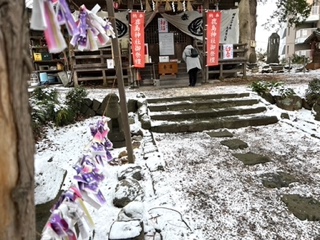
Because it was near, we then stepped over to the larger Aoba Shrine, Masamune Date’s. It had more people, of course, but the steady beat of the drum and the snow lent a rather hypnotic, reverential atmosphere.
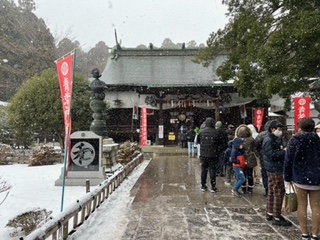
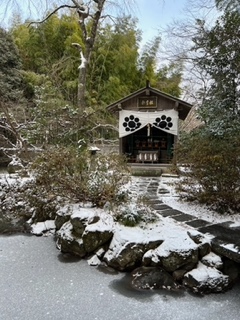
The New Year holiday starts on December 31st and continues through January 2nd. So, the following day Izumi and I headed south of Sendai to another shrine. Hatsumode, the First Shrine Visits, carry tremendous weight throughout the year, so going to several is not unusual.
We wanted to go to Takekoma Jinja, with its fox deity. But the traffic was so bad, cars literally sat unmoving for hours. So, we soon changed plans and went to a smaller one. It was on a hill nestled between rice paddies and vegetable patches. It was called Kana Hebi Sui Jinja, or Golden Water Snake Shrine. Snakes have a good meaning for Asians as they symbolize money and wealth.
After praying at the altar, worshippers, including Izumi, rubbed their wallets over stone images of snakes. They somehow hoped, even believed, that would bring them financial success this year. I followed behind Izumi, rubbing my hand over the snakes asking for an abundance of compassion in my own heart, enough to share generously with others.

The New Year also entails fortune telling, so closely connected to fate. Young and old believe in it, so fortune tellers were busy and lucky charms were sold almost everywhere.

This holiday also means food, and lots of it. Japanese New Year food, each type sorted so neatly in small compartments, is called O-Sech-Ryori. Izumi spent every second we were at home in the kitchen making one delicious meal after another. “This food has no calories,” she said. “So, eat as much as you like.”

Traditional O-Sechi-Ryori food symbolizes something special for the whole year. To name a few, black beans mean hard work and protection from evil. Kazunoko, or herring eggs, imply many generations, past and to come. Gobo, burdock, has very long roots, so promises a stable household. Datemaki, or sweet rolled omelets, suggest scrolls for knowledge and learning. Shrimp with their curled backs seem like oldsters, so they symbolize long life.


There is so much more to experience and learn about a Japanese New Year. So, I hope be here — and in good health — so as to enjoy many more in the years ahead. And when I do, I will share what I can with you.
Love and a very Happy, Meaningful New Year to you,
Anne
Preparing for the New Year
- At December 29, 2021
- By admin
- In Annes Letters
 0
0
Even though I have been in Japan for three decades, this is only my second New Year here. Last December and January I was in the hospital, struggling to establish a working relationship with my newly broken arm. In addition, even the food on that special day remained colorless and bland. So, last year hardly counts. Therefore, I consider this my first, despite Omicron’s threats to curb normal celebrations.
It has been fun for me to see and feel the excitement over this highly significant holiday. Preparations that I have seen so far have been mostly, but not completely, around food. However, downtown Sendai at night has an area filled with colorful lights. A friend tells me it is well attended. But I have not ventured out to see for myself. Too many people close together (even though the event is outside and almost all Japanese have been vaccinated) and too risky on icy streets at night after last year’s mishap. But checking out the food has been a delight.
First, the farmers’ market. Crab is a specialty in this season. There are piles of Horsehair Crabs from Hokkaido with their legs tied tightly around their bodies.
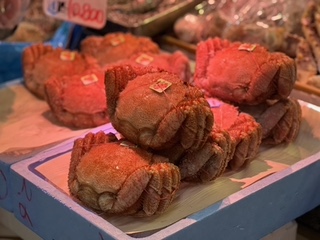

Closer to home at my local supermarket, the shelves are stocked with winter and New Year goodies. Root vegetables are popular. As is dried tofu.

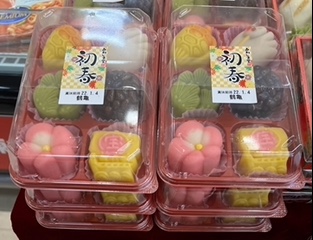
The entrance is filled with elaborate New Year decorations and small bottles of sake to offer the gods, asking for a prosperous year ahead.




And indeed, the bustle of New Year shopping is a very important part of Japanese tradition. Everyone joins in, even Grandpa, who has to come along, but sits patiently waiting for the women of the family to worry over details.

More to come.
Love,
Anne
Lasting Friendship
- At November 28, 2021
- By admin
- In Annes Letters
 0
0
Once again my friend Noriko called, asking if I might be interested in a day trip. She had been looking through old pamphlets of places near Sendai and came across one for Hobara (保原), a town south of Sendai, almost on the border with Fukushima. “It will be wonderful,” she reassured me. “It is famous for textiles and fruit.” Indeed, the name 保原, Protected Fields, seemed promising.
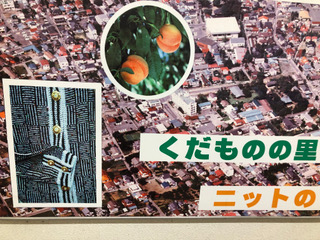
We were to meet Noriko’s longtime friend, from university days, half way there. Then we would pick up a special train and continue south. Actually, the train was a regular local one, but on the last Friday of the month it offered a special ticket. For one small fee we could go all the way to Fukushima and back, getting off and on as often as we liked.

We soon arrived in 保原, only to find a rather unfocused town. There were large factories surrounding the area, huge trucks laboring past, and no city center to speak of. When we finally found someone to ask for suggestions of what to see, they would look astonished, think for a minute, and say, “I don’t know” or “There aren’t any. But there is a famous mountain, Ryou Zen 霊山, 20 kilometers from here.”
Without a word, the three of us decided to explore the town anyway. There were meant to be several temples and shrines, which might be of interest. And surely there would be a main street of sorts. So, off we went.
We did find dusty old temples and shrines, none with any sign of life. But there were also many kura, or storage buildings, where, in times long gone, wealthy families stored valuable items. And there was one magnificent wooden structure that surely must have been a textile factory at one point. Those remnants of the past told us this town had indeed once been very prosperous.


The place was disappointing as far as touring went. But Keiko’s sense of wonder — about everything – made the day uplifting. Where I only saw a dilapidated temple, she marveled about old worn carvings in the eves. Where I bemoaned a steep slippery climb only to come upon a small shrine decaying from years of neglect, she threw a coin into the offering box, clapped three times, and bowed her head in prayer.
Noriko was filled with joy, too, at being with her friend of 50 years. Her life is hard, so a day away from her usual worries brought out the child in her. She giggled and told riddles. She talked loudly and laughed often. I silently delighted seeing her transform into a young person filled with hope at the good things life might have to offer. Keiko was much the same. Both have had very challenging lives. But on that day, there was only a sense of happiness, even playfulness at anything and absolutely everything.

After we had our fill of wandering through 野原, we headed to the train station. It was mid-afternoon, so we decided to head a few more stops south to Fukushima. Why? Because it was there and we could. And more importantly, because the day was a one of freedom, to be fully enjoyed, and unhesitatingly embraced.
We only had about an hour there, so despite being full from a large lunch, we headed to a coffee shop near the station. I ordered only tea, but Keiko chose a small round sweet to go with her coffee, and Noriko got a huge slice of chocolate cake and a large coffee. She beamed with every bite.

No matter where we might have gone, no matter what we might have seen, the joyous energy of lasting friendship made the day 100% perfect indeed.
Love,
Anne
Weaving, Dyeing, Patchwork, Painting
- At November 01, 2021
- By admin
- In Annes Letters
 0
0
My friend Noriko has wonderful ideas for day trips. So, whenever she asks if I would like to join her, I always say yes. This time she invited me, along with several other friends, to visit a weaving-dyeing shop in the mountains near Sendai. The area is called Zao. It is famous for a crater lake, good skiing, and thermal baths. But it turns out many artists-crafts persons have found their way there, too. So, it is a haven of creativity in a very natural setting.
The place we went to was called Go-Nin-Ten (五人展). That means “Five Person’s Display (of Goods). It was a lovely shop in a traditional house.
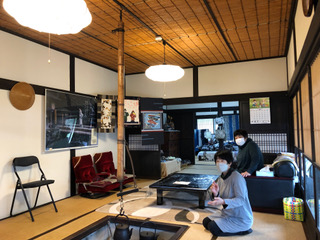
These artists and my friend Noriko studied in the same university, but with different majors. They became friends, though, and still stay in touch. Friendship, too, is very important to all of them.
Normally when you enter the shop, the first thing you encounter is an area with boiling pots. The dyeing artist collects leaves and grasses, flowers and berries in the surrounding forest. She then dries them, and grinds them into a fine powder for dyeing. It was Sunday when we went. So, that section of the house was quiet, but beautiful with recently dyed pieces hanging to dry.

The traditional shop was filled with goods hand-made by the five friends. There was dyeing, of course, and also weaving and patchwork. We could wander, touch, try on, imagine to our hearts’ content. All this while the lady who made a particular craft told us its story.


Against another wall was kimono material that had been dyed from plants with such poetic names as Moon Viewing Grass (月を見る草), Akane (Red Root) (赤い根), Tree of the West (西の木), and Kusagi or Tree of Grasses (草木).

What was a highlight for my friend and the five artists was a man who suddenly appeared while we were there. This gentleman had graduated from the same university, but ten years earlier than the others. He had been an abstract painter most of his adult life. But after his mother died, he began painting Mandalas. I had seen his work in a museum several months ago.

“I realize I was not a good son and I feel bad about that,” he confessed. “So, I create Mandalas as prayers for my mother. I also make them to purify my own heart. I want to send the purest of apologies and love to my mother. So, I need to be completely transparent inside.
“The process of painting these Mandalas is very sacred to me. And so, I offer them not only to my mother, but to the world. I want their energy to reach far and wide. I know we all have to make mistakes in order to learn. So, I hope these works will be a guide to anyone who needs them and is able to connect to their energies.”
Today was meaningful for each of us in our own way. As we left, we bowed our good-byes, and came home with memories of a day filled with beautiful crafts, long-lasting friendships, and the profound wisdom of a man seeking inner peace in the final years of a life well lived.
Love,
Anne
[1] The only translation I could find for Akane (赤い根) is literal, “red root”. But I am not sure what the correct term for this plant is in English.
Thinking of Others
- At October 24, 2021
- By admin
- In Annes Letters
 0
0
Dear Family and Friends,
Last week I got a notice from the post office. It said I should call a certain number about a package. Telephones are difficult for me in Japanese, especially with recorded messages. But I braced myself and plunged in. The mechanical voice said to punch in the “suiseki bango”. I had no idea what that was. I could neither find it in my dictionary nor see any characters for it on the notice. So, I tried every number. None worked. I started all over again. I got the same humiliating results. What to do?
My neighbor is a good friend, so I dashed over to ask for help. Unfortunately, she was out. But luckily, I saw a delivery truck down the street. I ran to it and poked my head in. Of course, the driver looked rather startled. What could a frantic foreign woman want? But when I said, “Please help me. What is a “suiseki” number?”, he visibly relaxed. Then in a fatherly way, he took the delivery notice, circled the number, and said, “Here, this is what you want. And after you dial it, this is what will happen . . .” Relief flooded through me. I bowed my gratitude and raced back to make my important call.
Another very meaningful experience happened in Sendai Station. I was heading off on a four-day trip. When I travel, I do not worry about appearance so much as practicality. So, my clothes were very bulky, but comfortable. In the station I noticed a woman standing discretely in a corner. She had several bags neatly piled behind her and was eating a cookie. Where had I seen her before? Suddenly I remembered. She attends the Yomawari Group’s meal service for the homeless.
Later when I was on my trip, I discovered to my dismay that my phone cord did not work. That meant no photos, weather, health, or time. Needless to say, I was rather frantic. But the hotel receptionist immediately lent me theirs. The next day I hesitantly asked if I could borrow it, just for my trip. This time the receptionist seemed to be the manager. With a twinkle in his eyes, he said, “Of course, no problem.” To my amazement, he did not ask for a deposit. He simply trusted.
When I showed up four days later, he had the same somewhat amused twinkle in his eyes. I bowed deeply and said, “Everyday my gratitude to you overflowed.” He smiled again, took the cord, and then turned to help a customer. The matter-of-fact trust he had deeply moved me. Yet, every person I met in Iwate Prefecture had a purity and loveliness that evoked a sense of openness and belief in others. I was one among many.
I traveled in very rural places. That meant many train stations had minimal or no signs. The locals simply knew. One station was so small and unmarked that I thought it was an empty shop. But once again, a lovely man came to my aid. He had Parkinson’s, so he had trouble walking and talking. But even so, with head jerking and eyes rolling, he guided me to the teeny platform, and made sure I got on the only train that passed through. I feel a deep respect and tenderness towards that gentle, caring man even now.

A few days later, when I was back in Morioka, I took a bus to the city museum. We passed the municipal hospital. Coming out of it was an ancient couple, both very stooped over, ever so slowly shuffling to a waiting car. They were holding hands. That alone was very sweet. But then I noticed the man had tubes up his nose. The wife had a backpack. It held the breathing apparatus attached to the tubes. Why not a wheelchair? Proud Japanese farmers will stand on their own to the very end. I thought of the years and many experiences that had woven this precious couple together, bringing them to this very moment. That image was both beautiful and profound.

I returned home filled with the kindness and positive spirit of so many people. I hope I can live that attitude as my daily life resumes.
Love,
Anne
Niigata, a Kinder World
- At August 10, 2021
- By admin
- In Annes Letters
 0
0
Dear Family and Friends,
Niigata Prefecture is southwest of Miyagi. It is not far, but it never held my interest enough to consider a visit. However, for the past few months I have been supporting a friend, helping-hoping to keep her travel agency alive. Together she and I decided Niigata was off the beaten track enough to allow for a safe trip. So, I went, armored with my two vaccinations, double masks, a teeny spray jar of alcohol, and the year-long habit of following social distancing.
Niigata is indeed rural. At this time of year, everywhere is green: sharp thanks to paddies, complemented by lush home gardens, and beautifully contrasted with the dark mountains serving as a perfect backdrop or frame for the entire verdant setting. The vast paddies produce Koshihikari rice, famous for feeding locals and Tokyo residents in abundance.

Along with that, there are thermal baths scattered throughout. Spa towns are everywhere, as are free footbaths, which farmers enjoy together, drinking sake and laughing, after a hard day of work.
Besides the ski slopes that attract people from all over the country in winter, there are a few other tourist attractions. Two very old Buddhist temples are particularly famous. They have carvings by Ishikawa Uncho. Saifukuji has an elaborate, rather gaudy ceiling.

Eirinji is more humble and gracious, probably made when the sculptor was older with years of experience behind him. Photos of either temple were not allowed, so I captured the images from the brochures I received.

What I loved most in the latter was a series of teeny carved monks, not being reverent or pious, but rather showing their delightful humanity. One was scrubbing clothes, another grating a daikon, one was patting a rabbit, another bellowing out songs to his heart’s content, while yet another was falling head over heels in an unexpected tumble.
One town boasted millennium-old metal working.

Another had stunningly handsome weaving, also a well over-1000-year-old tradition. The quality was superb An obi, or kimono sash, could easily cost the equivalent of $20,000.
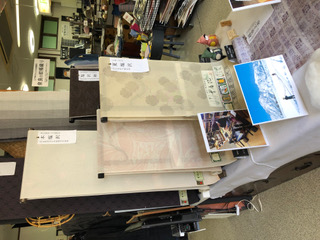
The food, of course, we outrageously delicious.

But what struck me the most were the people. They live in small communities, need each other, trust each other, help each other. They are open, friendly, curious, and extremely helpful.
The transport system was frustratingly inconvenient, with trains or buses coming very irregularly, most trips requiring several changes, fast running to catch the once-every-two-hour train, and then waiting for 45 minutes or longer in the next village for a connecting train to arrive. It was confusing at best for me, but the locals, from grandmas to young school kids, were eager to get me to where I needed to go.
And aboard, older people would want to chat, sitting across from me for social distance.

Once when I missed a train and had to wait over an hour for the next one, a man laughed and said, “Isn’t this kind of time wonderful? It gives you a chance to reflect and to enjoy the beautiful surroundings.” The station was wooden and small, surrounded by paddies. It was indeed peaceful and graciously stunning.
I had to take a taxi to get to Saifukuji Temple. The driver had marvelously slicked back hair, shiny as if it were lacquered. He had pointed black shoes and a trim suit, despite the relentless heat. He told me everyone there was a farmer, including himself. He reassured me many in the younger generation were choosing to stay on the land, rather than flock to cities. Later I found a flyer, “Know the Future”, praising the work of farmers. I was relieved to know that essential tradition was proud and continuing.
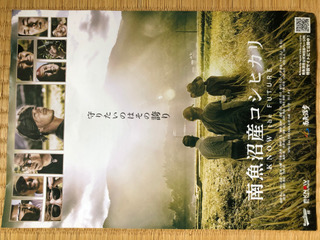
Other people either drew or printed out maps so I could find my way. Some were along very circuitous roads that had once been pathways through paddies.
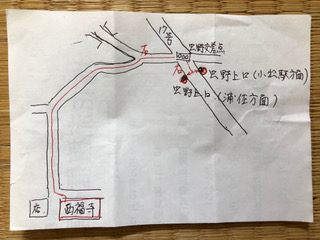
One bus driver even got off the bus when he saw me at a stop and asked where I was going. “This is holiday time, so buses are really scarce. Get onto my bus because it is here. I will help you make the connection you need.”
The people are used to very hot summers and bitterly cold winters. It is common for summer temperatures to reach 38º C or higher (over 100º F), as they were when I was there.

But you could tell winters were fierce because roads were lined with high poles to mark their location when snows became exceedingly deep.
After a rain, a grandmother said to me, “Today’s cool weather is such a welcomed break. It is only 34º today. What a relief!” I laughed and agreed. In fact, when I got back to unusually-hot-for-Sendai’s 28º, it almost felt chilly.
My final stop was back in urban Niigata City to a kite museum. It was an hour bus ride out, then an hour’s walk along horrendous major highways, with trucks, buses, cars, and motorcycles roaring past. Of course, it was made of infernal blacktop, and bordered by huge parking lots, shopping malls, and chain stores. There was even a kitch golden Buddha with two cute stone owls. What a shock anytime, but much more so after the few days I had just spent.

But the museum was superb, so I was glad to have made the effort to get there.

Before heading back along the hell that had brought me there, I sat down to munch on a rice ball. While there, one of the museum staff stepped outside and politely came to chat. “We don’t get foreigners here much. So, it is a privilege and very exciting having you here. Thank you for coming, especially since it took so much effort. That means a lot to us.” I smiled and said I was the one who should thank them. My stay in Niigata had been wonderful.
My four days there reassured me that the world has tremendous potential for living in harmony with nature, for human kindness, openness, and trust. Surely, we humans can be larger, deeper, and more thoughtful than what many of us in recent years have come to expect.
Love, Anne
My Neighborhood
- At July 02, 2021
- By admin
- In Annes Letters
 0
0
To start, I believe this section of the city was once rice paddies. The soil in neighbors’ yards is very dark brown and lush. Vegetables and flowers grow in abundance. Now, though, there is one ugly main road curving through it, with no side walk to speak of. People take turns going down it.


Side streets twist and turn, suggesting walking paths at one point. Many of the houses on those streets are humble and the neighbors like family.
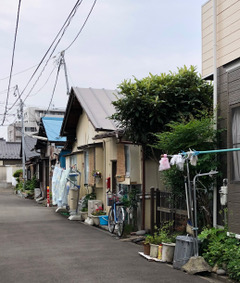
Since the 2011 earthquake, however, Sendai has been getting a serious face-lift. So, many of the sweet narrow paths and traditional homes with open space, and maybe a few trees, are being replaced with “danchi”, or housing developments. House / parking lot / not a tree or garden in sight. It is depressing, needless to say. And sadly, only adds to fast-approaching, far-worse environmental extremes to come.

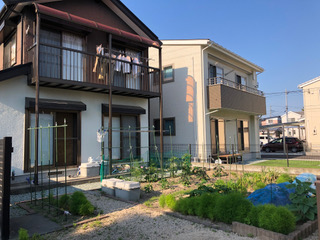
The young families who buy the large trendy homes feel they must have enormous cars to match. It is quite an art to maneuver these monsters down narrow alleyways. Pedestrians have to lean against walls to let them pass, often getting their noses brushed by the wing-like side mirrors. But so far, we have stayed accepting and gracious neighbors.

There are many small shops and businesses, even a family-run mental hospital, dotting this neighborhood. Most have been here for years. The buildings they are in may have seen better days, but the places themselves are alive and well. Here are just a few.



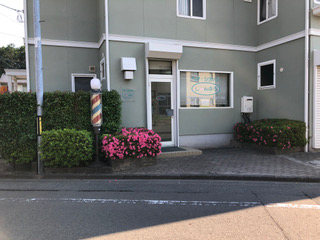


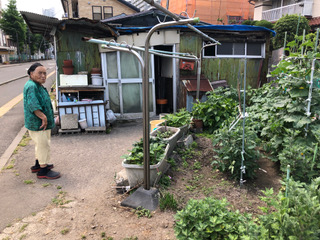
Another favorite is “The Barber Lady”, who lives in my small, family-owned apartment complex. She has her shop in the front building, where she lives upstairs. She, too, has been here a long time and knows everyone’s news. Periodically, she pops over with something she has cooked. “You live alone, so I worry about you,” she says. “Actually, I give food to five single people nearby. We have to take care of the vulnerable,” she adds. I have given up telling her I am fine, and she should focus on the others. She is insistent, so I simply accept her generous offer, and then get her something special in return. Recently, she gave me a wild vegetable and fish stew. The vegetables came from a forest-park nearby with signs saying not to collect any wild plants. She goes at the crack of dawn so as to keep her transgression a secret.

Forest Bathing, a unique experience
- At June 20, 2021
- By admin
- In Annes Letters
 0
0
Several months ago, a friend sent me an article about “Shinrin Yoku” (森林浴), or “Forest Bathing” here in Japan. It was a very idealized account of people immersing themselves in nature, releasing all their stress, and returning to their daily lives feeling rejuvenated and whole. Although I agree with the concept, and each morning practice a form of “Shinrin Yoku” with my one brave tree, I must admit I laughed at the time. Many of the Japanese I know say they love nature, but cut down trees with abandon, shriek if a fly passes by, and choose a blacktop parking lot over a home garden or a shopping mall to replace rice paddies. But the other day a friend who owns a travel agency asked me to please join her “Immerse Yourself in the Energy of Trees” tour. She needed another member to make the trip viable. I agreed to go, even though I prefer private trips to group outings.
We went to the Mogami area of Yamagata Prefecture. It is renowned for its natural beauty, where for centuries humans have blended seamlessly with the natural world. High mountains surround lush valleys with small villages and numerous fields of rice, garlic, and soba. Grandmas in big straw hats bend over their vegetable gardens, while men work diligently to keep their farms humming smoothly.

That region served the elegant Kyoto area for hundreds of years with its safflower and silk. It is more humble now, but still boasts spa towns, the Mogami River, and a large cedar forest in its center. That is where we were heading.
Our group consisted of seven women, some young, some old, most in between. The rented bus was small, but we could social distance easily. Ito San, the tour leader, told everyone not to panic with me there. She reassured them that I understood enough Japanese to hold a conversation. I smiled and said nothing.
Our first stop was at a small shrine nestled between rice paddies. It was called “Isurugi Shrine” (石動神社), which translated literally means “Moving Stone Shrine”. It was old and simple, blending in perfectly with the surroundings. Towering behind it was a huge cedar tree, said to be over 1200 years old. People have come to worship before it and ask for healing since it first showed signs of becoming a grandmother tree.
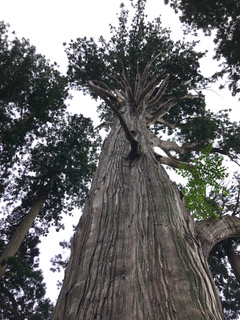
Akiko, one of the group members, was particularly taken with this Mother of Trees. She had spent the past thirty-six years taking care of her husband’s grandparents and parents. It was a very traditional family, so she had been the servant of all. She hated every second of it. But recently the last in both of those older generations had died. She felt emancipated. She was so grateful that she lay back against the tree, arms wide open, saying, “I am free. I am free. I am free.” Later she said to me, “I sense I have known you in past lives. I felt comfortable as soon as I saw you. I can tell you anything.” And then she told me the living hell she had endured, but now she was proud that she had done her best to the very end. “I succeeded. I am stronger. I am satisfied,” she said. Later I invited her to join my English discussion class for adults. So, her world is starting to open up, and I am glad.
From there we went to the Kagikakemori (かぎ掛森), which is indeed a lovely forest. It was raining rather heavily by then, but we ventured forth anyway.
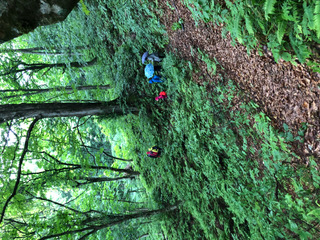
But that annoyance was balanced by the guide who helped me. I explained that I had broken my arm and this was my first time using a backpack since then. I told him I still had no confidence in my balance, especially in forests with wet leaves. So, when we reached slippery log bridges, he said, “Anne Sensei, shake hand”, and firmly took my hand in his huge paw and guided me to the other side with ease. He was the kind of person who was solid and sure, a tree of sorts, and one I truly appreciated and admired.

We were a motley crew. And that made the day fun. I cannot say I experienced the blissful “Shinrin Yoku” that my friend’s article promised. But I did come home amused and happy, and wondering what another tour with my friend’s group would bring. Maybe someday I will find out.
Love,
Anne
Japanese Mummies
- At June 02, 2021
- By admin
- In Annes Letters
 0
0
Did you know that Japan has mummies? I didn’t until very recently. Of course, the history of this land extends back tens of thousands of years. But unlike Egyptian mummies, these Japanese preserved beings are relatively recent. In fact, the last one occurred in the 19th century, the first about 800 years ago in the Heian Era.
Besides age, another way the two differ is that in Egypt the pharaoh was mummified after death, probably as a way to preserve the god that he represented, or even the splendor and ego of the man himself. He was also laid to rest in a coffin.
In Japan, however, the mummies were monks of the Shingon Buddhist sect. They chose to become mummies while they were living. These men were very devoted believers and became mountain ascetics, living many years in isolation and prayer as a way to purify themselves.
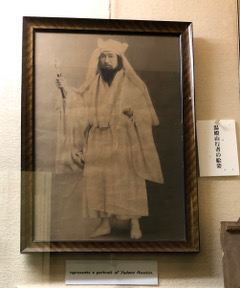
There are sixteen self-mummified monks, or soku-shin-butsu, in Japan. Eight of them are in the Tohoku region, in Yamagata Prefecture. I recently visited a temple in Sakata City that has two of them: the Venerable Chukai and the Venerable Emmyokai. Their stories are truly astonishing and very thought-provoking. At different times, these two had been abbots of the Kaikoji Temple. But at age 50, both of them knew they wanted a more rigorous involvement with their Buddhist practices. So, they went to Mount Yudono, one of the three most sacred mountains in Yamagata. There they would live very austere, isolated lives dedicated to prayer and meditation.
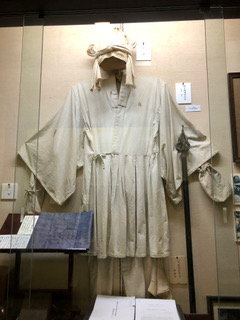
After several years of this, each in his own way realized he wanted to give his physical life to help alleviate the suffering of humanity. So, they started the long ordeal to become a mummy. First, they reduced their physical selves as much as possible. They ate only nuts from the mountain and buckwheat mash, and drank only water. Venerable Chukai did this for eight years, Venerable Emmyokai for five. In some cases, the monk would also drink mild doses of lacquer. This, of course, encouraged their death, but would also preserve their body, which the monks wanted to do.
When these brave souls realized they were close to dying, they had devotees dig a narrow hole about three meters deep and lined with stones. They would sit in a lotus position and be lowered into this “tomb”. Then the top would be sealed off. But a small opening was left with a bamboo pole protruding through the surface.


I spoke to several locals about soku-shin-butsu. Every time they would become silent, bow their heads, and place their hands in prayer. “They were such selfless people,” they would say. “I ask them for help when I need it most. I always feel assured my prayers are answered.”
And sure enough, when I was ushered into the temple and stood before these Buddha-mummies, I felt a sense of the deep devotion of the thousands of believers who had been there before me and those who would come after. I also deeply pondered the ordeal those men had endured in order to perform the greatest sacrifice they could offer: their lives. And like them, I hope their choice will enable our troubled world, and individuals in it, to find hope, inner guidance, and stability, so we, in turn, can serve others in our own particular ways.
Love,
Anne
Seeking Beauty and Delight
- At April 27, 2021
- By admin
- In Annes Letters
 0
0
Writing about myself seems so small, even petty, in this day of global concerns. Even in my own world, I have friends in the hospital for knee replacements, brain surgery, and an unknown illness that causes severe swelling and robs the face of flexibility. I have another friend suffering from depression as she claws her way through her Dark Night of the Soul, and another rigid with anxiety arising from ugly abuses in her past.
With one disturbing incident after another, I finally decided to shift focus. I wanted to see beauty and delight in my daily life. Or rather, let them blossom, in both my outer and inner worlds. Curiously, just as I made that decision, both of my physical therapists encouraged me to go to a spa for a few days. “Despite Corona, if you take necessary precautions, you will be fine,” they promised. “And it will be really good for your broken arm. Go!”

So, I did. I need not have worried about Corona. There were about five people on the trains and in both hotels, I was the only guest. The first place, Naruko, was delightfully shabby, despite being a famous spa town with a history extending over 1000 years. People come from as far away as Tokyo to enjoy the soothing waters, and to enjoy the rural atmosphere still very much in tact in the region. No doubt it is the Sulphur in the water that causes the corrosion everywhere.

I love the practical nature of Japanese rural folk, even as they have a high regard for aesthetics. I mean, why not use a metal kitchen rack against a Shinto Shrine to block out rodents? How about drying rubber gloves over the heater in the hotel entranceway?
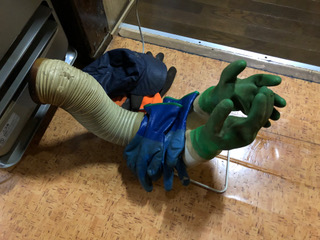
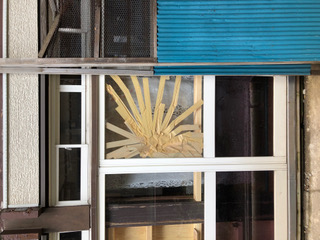

Yet, even in yards full of farm equipment and the day’s laundry, there will be a cluster of bright flowers to brighten the soul and give charm to the home.
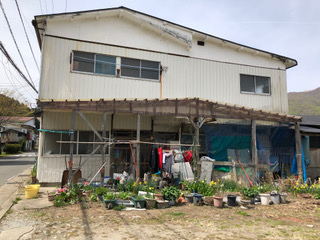
When I left that town for another, on one of the rare trains passing through, I ended up chatting with another lone traveler as we waited. We were very involved in our conversation when suddenly a round man in uniform came running to us. “Aren’t you ladies going to Shinjo? This is the train. I am the conductor and I don’t want you to miss it. Please hurry and climb aboard.” Later he drove the train very slowly through a stunning gorge and announced, “OK, everyone, go to the right side of the train and get some good photos.” This, by the way, was a regular train, not one for tourists.
The second spa town was high in the mountains. It was called “Hiji-Ori Onsen”. That translates as “Bent Elbow Spa”. For centuries samurai and oldsters have gone there with broken bones that beg for healing. It was cold. And had snow. In fact, both days I was there, intermittent rain and snow, plus sharp winds, were constant companions. Of course, we used heat. And took deliciously warm baths.

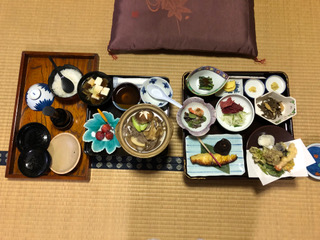
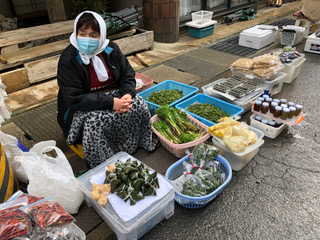
The owners of my Meiji Era hotel were fifth generation. They were delightful and very welcoming. The stairs were like a ladder in steepness, so they brought me dinner in my room, fearing I might fall and break another bone if I climbed them too often. The day I left, I walked down the only street of the charming village, full of traditional inns, savoring the atmosphere one last time. Then, to my surprise and delight, as the bus tooted past the hotel, I saw the owner and his wife outside waving to me. “Please come back. Please come back,” their warm smiles seemed to be saying.
Given a chance, I surely will.
Love,
Anne
I remember
- At March 11, 2021
- By admin
- In Annes Letters
 0
0
In Sendai there is a museum that honors The Great East Japan Earthquake and Tsunami. Currently there is an arrangement of small figures made of kimono material. They represent the souls of those lost on March 11, 2011.
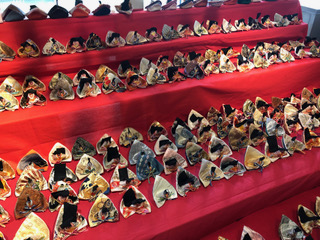
There is also a piece called I remember: memories of the disaster and a parenting for 10 years. It consists of a simple platform with smooth wooden eggs placed at regular intervals. The surrounding walls have a parade of dates stretching thousands of years into the past and forward into the future. It subtly reminds us that we are truly part of an eternal process, continuously expressed through the tragic and beautiful vicissitudes of life.
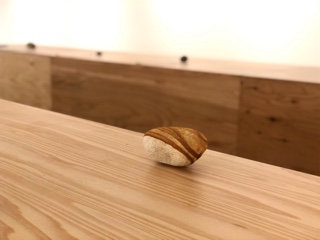
People here believe the souls of the departed return to earth at special times. The deceased long to communicate with the living, and to both give and receive blessings. And indeed, the feeling here has been quietly different the past few weeks. Because of that, I felt an urge to visit several areas close to sea. I have gone to connect to others, living and dead, and to my own inner need for remembering.
A friend told me she had been feeling the same way. So, recently, she went to Fukushima, to the very edge permitted for visitors, close to the devastated nuclear energy station. She was especially struck by the bareness of it all, with homes left empty for ten years, yet one lone temple gate still standing.


My day trips were near Sendai. Arahama, or Rough Coast, is renowned for the middle school where students and faculty fled to the roof and watched the tsunami roar through the rooms where they had just been studying. Miraculously, the building was strong enough to withstand the onslaught, and was left intact to become a museum.
When I went this time, however, the school was closed. But nearby was a small open-air museum consisting of the actual ruins of devastated houses. There was also a tsunami wall, more a barrier to give people a fraction more time to escape, rather than a guarantee of no harm. Now it is used for recreation: walking, jogging, bike riding. The beach, now clean of debris, is enjoyed by fishermen and families, school kids and young sweethearts.


Today I headed to the newly planted forest near Sendai Airport. I had been there a few days after the tsunami. At that time, I was shocked by the amount of damage and debris everywhere. But now the forests are growing nicely. There is also a wide park that stretches along the coast. There used to be farms, but they are no longer allowed so close to the sea.

The tsunami hit at exactly 14:46. I wanted to be there at that time. I went early and was almost the only one there. Compared to Arahama and despite the newly made park, this place at first seemed severe and unwelcoming. But gradually people began to arrive. Soon there was a steady stream of them, all coming to sound the bell of prayer and to remember.

Then without a word, worshippers stopped queuing and quietly formed a semi-circle around the bell. There was complete silence as people reverently waited. On the dot of 14:46 a short siren sounded, and in unison everyone bowed their heads. For a moment it was as if time stood still.
After a few minutes the spell was broken. Some people turned to leave, others went forward to pray. Some remained reflective, a few resumed their interrupted conversations.
Disasters are ingrained in the Japanese DNA. They come, cause havoc, and leave. But people always say, “We are here. So, let’s help wherever is needed, and enjoy whenever we can.” And in that spirit, they continuously “Build Back Better” for a safer, hope-filled tomorrow.

Landscape that Weaves Memories by Nakagawa Kazutoshi
Love,
Anne
PS. NHK made a very touching documentary on how people in one small town coped emotionally after March 11, 2011. It was filmed five years ago. But what they did then is probably still happening now. Processing grief takes a long time. This film also gives very interesting insights into Japanese rural culture.
https://www3.nhk.or.jp/nhkworld/en/ondemand/video/4001232/

